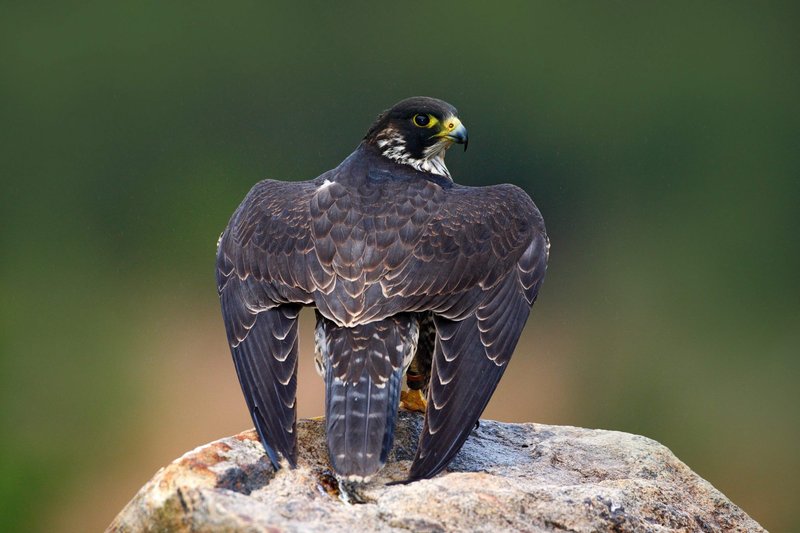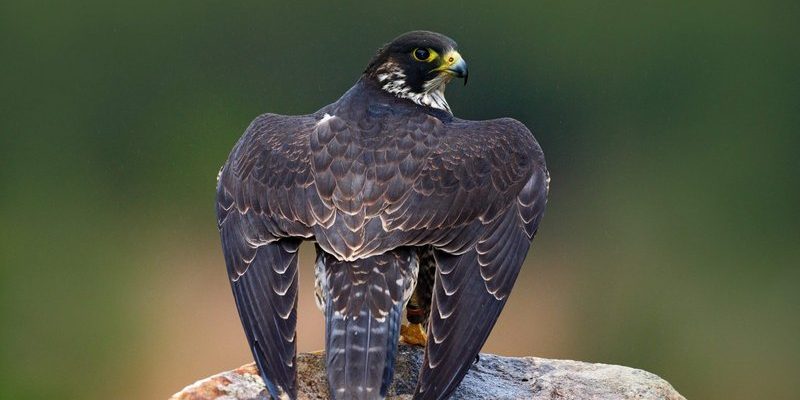
Peregrine falcons are found all over the globe, except in extremely harsh environments. They adapt well and have thrived in both rural and urban settings. Just picture a sleek falcon perched on a skyscraper, scanning the city for prey. In this article, we’ll explore ten interesting facts that showcase what makes the peregrine falcon one of the most extraordinary birds on the planet.
1. The Fastest Bird on the Planet
Honestly, when it comes to speed, the peregrine falcon takes the crown. They can reach speeds of over 240 miles per hour during their hunting stoop, which is a fancy term for their diving attack. Imagine a car racing down the highway at 240 mph—that’s how fast these birds can fly!
During this power dive, they tuck in their wings and use gravity to their advantage. It’s like a rollercoaster ride but with a purpose: catching their dinner! Their incredible speed not only makes them effective hunters but also positions them as the fastest animals on Earth. It’s a bit mind-blowing, don’t you think?
2. Stellar Vision
You might be wondering how these birds can spot their prey from such great heights. Well, peregrine falcons have some of the best vision in the animal kingdom. Their eyesight is estimated to be 8 to 12 times stronger than that of an average human. They can spot a small bird flying several hundred feet below them!
This incredible vision enables them to track their prey with pinpoint accuracy. Think of it as having a superpower that allows them to see details we could only dream of. This not only aids in hunting but also helps them navigate their surroundings effortlessly.
3. Unique Coloration
Peregrine falcons sport a striking appearance that sets them apart. They typically have a blue-gray back, a pale chest with dark spots, and a distinctive black “helmet” cap that gives them a fierce look. This mix of colors is not just for show; it helps with camouflage.
When perched on high cliffs or buildings, their coloration allows them to blend into the surroundings. This makes it easier for them to spot prey while remaining hidden. You could almost say they have their own built-in stealth mode!
4. Global Distribution
One of the most interesting things about peregrine falcons is their adaptability. They can be found on every continent except Antarctica. From bustling cities to remote wilderness areas, these birds thrive in diverse environments. You might catch a glimpse of one nesting on a skyscraper in New York City or soaring above the Rocky Mountains.
This wide distribution is a testament to their resilience and ability to adapt. They’ve learned to hunt and live alongside humans, making them a common sight in many urban areas. It’s amazing to think that such a fierce and agile bird can coexist with city life.
5. Incredible Parenting
Peregrine falcons are devoted parents. Both the male and female share the responsibility of incubating eggs and caring for their chicks. After a three to four-week incubation period, the young falcons hatch and are called eyasses.
These little bundles of fluff are pretty helpless at first, but their parents are often seen feeding them and protecting them from dangers. It’s a bit inspiring to watch how both parents contribute to raising their young, highlighting the importance of teamwork in the animal kingdom.
6. Vocal Communication
Communication is key in the animal world, and peregrine falcons are no exception. They have a variety of calls that express different emotions. From sharp whistles to low croaks, they use these sounds to warn off intruders or signal to each other, especially during nesting.
Their vocalizations can range from soft chirps when comforting their young to loud, aggressive calls if they feel threatened. This ability to communicate effectively helps them maintain their strong family bonds and keep their territory secure.
7. Migratory Patterns
Peregrine falcons are known for their migratory habits. Many of them travel long distances between their breeding and wintering grounds. Some populations migrate thousands of miles to find warmer climates during the winter months.
These migrations usually start in late summer and can lead them to different countries and continents. Imagine a bird crossing oceans and navigating storms, all in search of the best places to find food. Their instinct to migrate ensures they always have access to the resources they need to survive.
8. Conservation Success Story
Once on the brink of extinction due to pesticide use, peregrine falcons have made a remarkable comeback thanks to conservation efforts. The banning of harmful pesticides like DDT in the 1970s and active breeding programs helped boost their populations.
People worked hard to protect their habitats and promote awareness, leading to impressive recovery. Today, they are classified as least concern by the IUCN, a true example of how dedicated efforts can lead to thriving wildlife.
9. Diet and Hunting Skills
Peregrine falcons primarily feed on small to medium-sized birds, but they’re not picky eaters. They’ve been known to hunt anything from pigeons to songbirds. Their hunting technique is both swift and efficient, often using a surprise attack from above.
They can spot their prey from a distance, dive down, and catch them mid-air—talk about skill! This ability makes them one of nature’s top predators, ensuring a balanced ecosystem while showcasing their impressive hunting prowess.
10. Fascinating Adaptations
These birds are full of surprises. For example, peregrine falcons have special features, like nictitating membranes—think of them as built-in goggles—that protect their eyes during high-speed dives. This adaptation allows them to keep their eyes open and focused, even when racing towards the ground.
Moreover, their strong, curved beaks are perfect for tearing into their prey. With a combination of strength, speed, and specialized features, peregrine falcons are perfectly designed to thrive in their environments.
In conclusion, the peregrine falcon is more than just a fast bird; it’s a symbol of resilience, adaptability, and the power of nature. From their incredible speed to their impressive hunting skills, these birds continue to amaze everyone. Whether you spot one soaring high above or resting on a ledge, there’s no doubt they’re a remarkable part of our world. Next time you see one, take a moment to appreciate the beauty and skill of the peregrine falcon!

